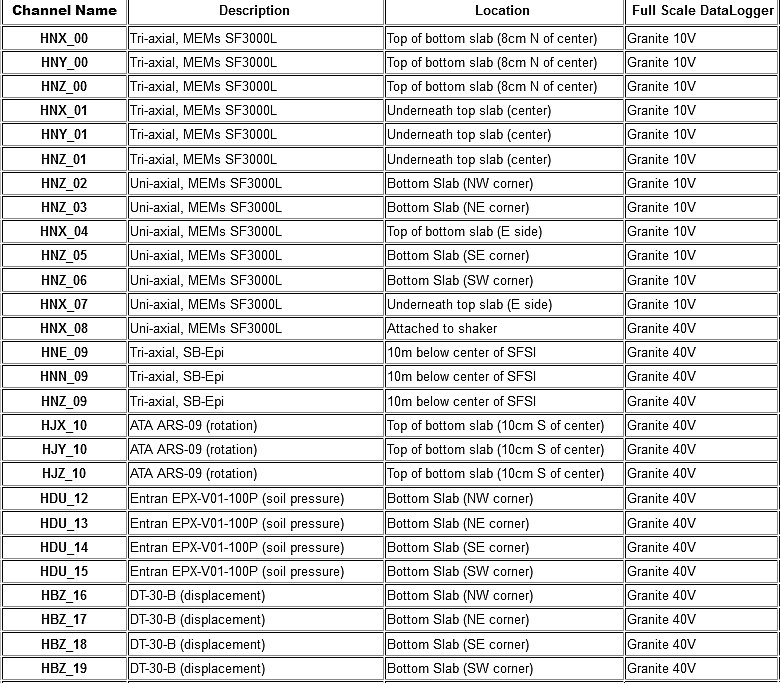Overview
 The Garner Valley Soil-Foundation-Structure Interaction (SFSI) test facility is a medium-scale reconfigurable steel-frame structure founded on a rigid, massive concrete slab on grade. The superstructure is of a size appropriate for testing on one of the NEES shake tables. Shakers can be mounted on the roof for active experiments to complement passive earthquake monitoring.
The Garner Valley Soil-Foundation-Structure Interaction (SFSI) test facility is a medium-scale reconfigurable steel-frame structure founded on a rigid, massive concrete slab on grade. The superstructure is of a size appropriate for testing on one of the NEES shake tables. Shakers can be mounted on the roof for active experiments to complement passive earthquake monitoring.
The SFSI facility was designed to study the passage of waves through the soil column below the structure, up through the foundation and into the structure. Often the observations of ground shaking recorded on the foundation of structures is not the same as that recorded on open ground due to the interaction between the soil and foundation. Understanding these interactions at a relatively simple site using a simple structure is a primary purpose of this facility.
In addition, using a remotely operable shaker attached to the roof of the structure, temporal changes in the structures response can be monitored. Environmental factors like temperature and the level of saturation of the near-surface soil can have an effect on its response.
Sensor Channel Details
See SFSI_Instrument_Details.pdf for sensor and channel details, the table below shows a summary of the structure's instrumentation.


